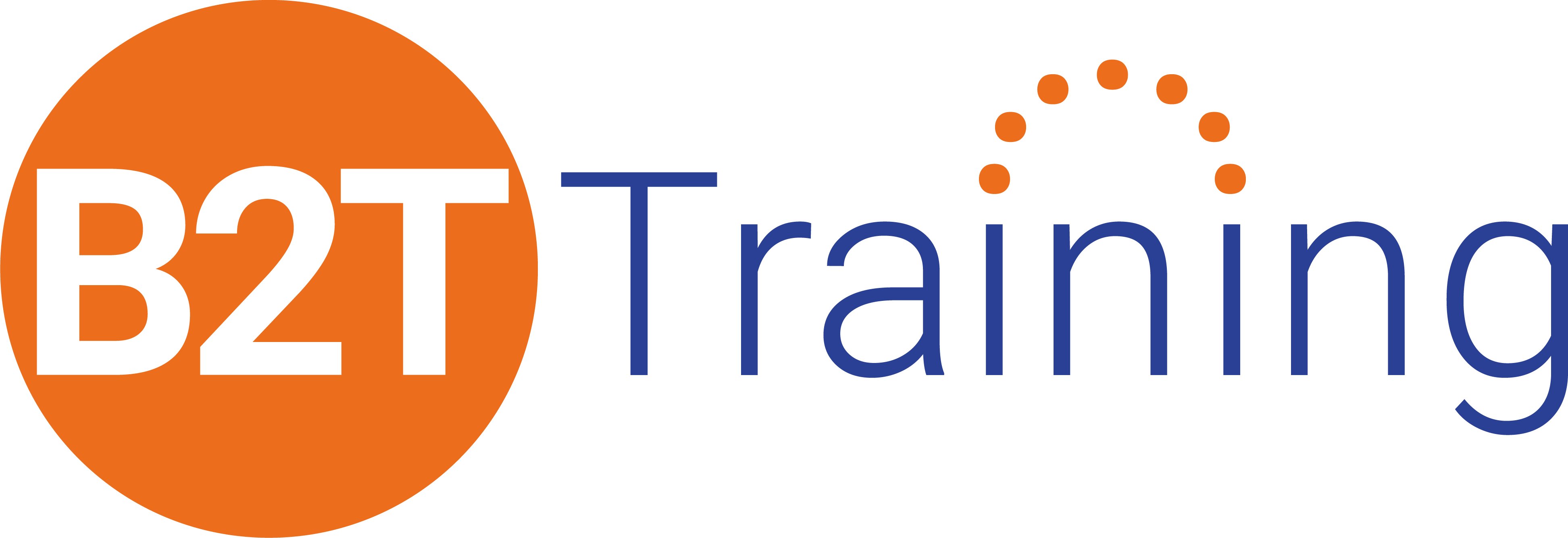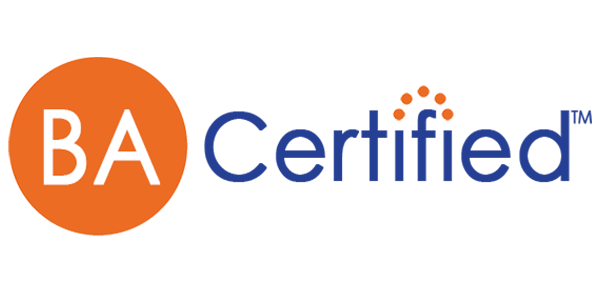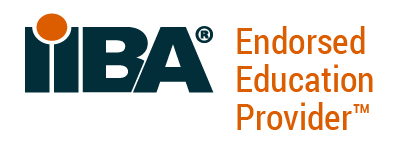It was great to be back at the Building Business Capability conference last month in Las Vegas! It’s such a terrific opportunity to interact with the BA community. I always come away with fresh insights and a renewed sense of purpose after interacting with other speakers and attendees.
This year one of our instructors, Scott Helmers, led a session on the power of Kanban. Using a board game, he demonstrated some key Kanban practices that I want to share with you today.
You may be thinking to yourself, “Isn’t Kanban one of those boards? You know, the one with the To Do, Doing, and Done columns?” Kanban, however, is so much more than a board. It’s a method of understanding and improving our work, so it can become more predictable and can occur at a sustainable pace.
There are six practices in the Kanban method:
- Limit WIP (Work in Progress)
- Visualize Work
- Manage Flow
- Make Policies Explicit
- Feedback Loops
- Improve & Evolve
We use a game from Okaloa FlowLab to let participants actually experience how Kanban practices can improve their work. The game is played in two rounds. In the first round, participants work on tasks the way they typically would. Each participant has their own work, and every day their project manager assigns work to the participants to make sure they all stay busy and don’t have any downtime.
In the second round, we implement some Kanban principles and let students experience the difference it makes in their productivity. Let’s take a look at how four of those principles play out for us as analysts.
Limit WIP (Work in Progress)
Breanne Casteel from Kampgrounds of America and I helped Scott facilitate the session. This opening skit showing a BA being inundated with work may feel familiar to many of you:
Who hasn’t felt overwhelmed with work, and all the while more work keeps rolling in? Then the boss shows up with an urgent issue, so you have to drop what you’re doing to deal with it…and everything else just keeps piling up.
In Kanban, teams set a limit for how much work they will have in progress at any point in time. It’s called a “WIP limit”. We like to teach them to “Stop starting work, and start finishing work”. The diagram below is called a “cumulative flow diagram”. It shows how much work has been started (the red), how much is roughly half complete (the blue), and how much is finished (the green). Look at the difference between the first round, with no WIP limit, and the second round:
Round 1
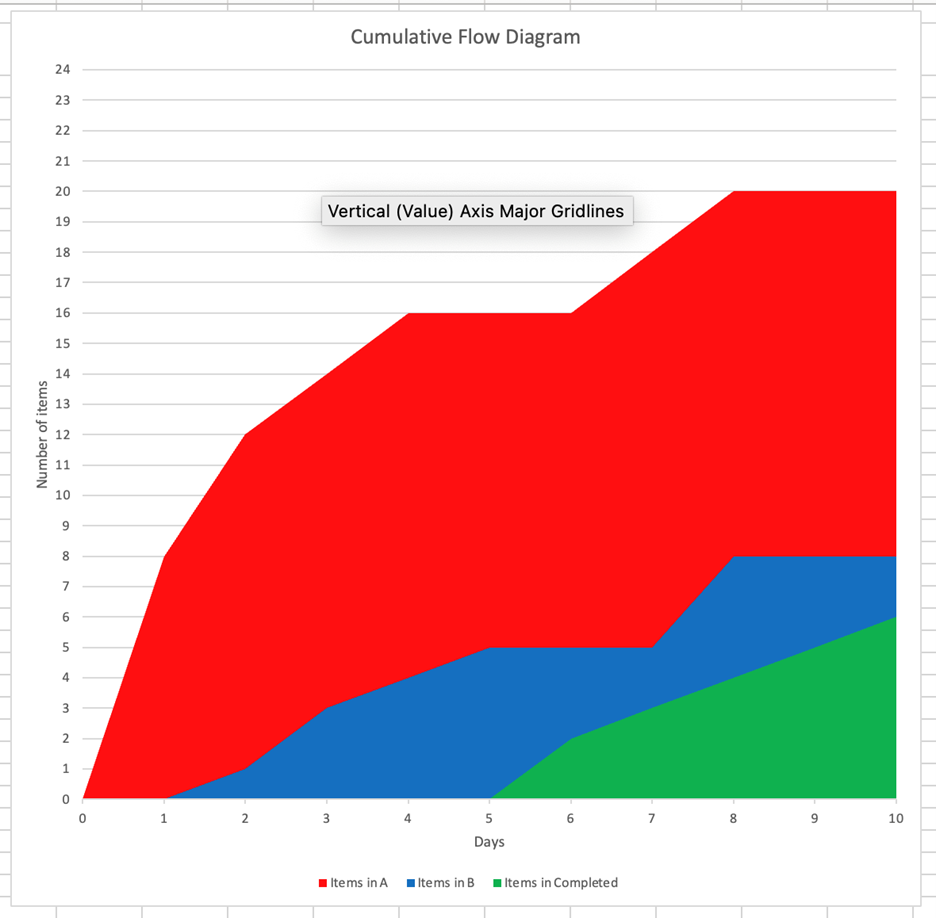
Round 2

I get overwhelmed just looking at the first graph! People find it hard to believe, but by limiting WIP you actually complete more work.
Visualize Work
This brings us to the Kanban board, the part of Kanban people are most familiar with. Here’s an example of a simple one:
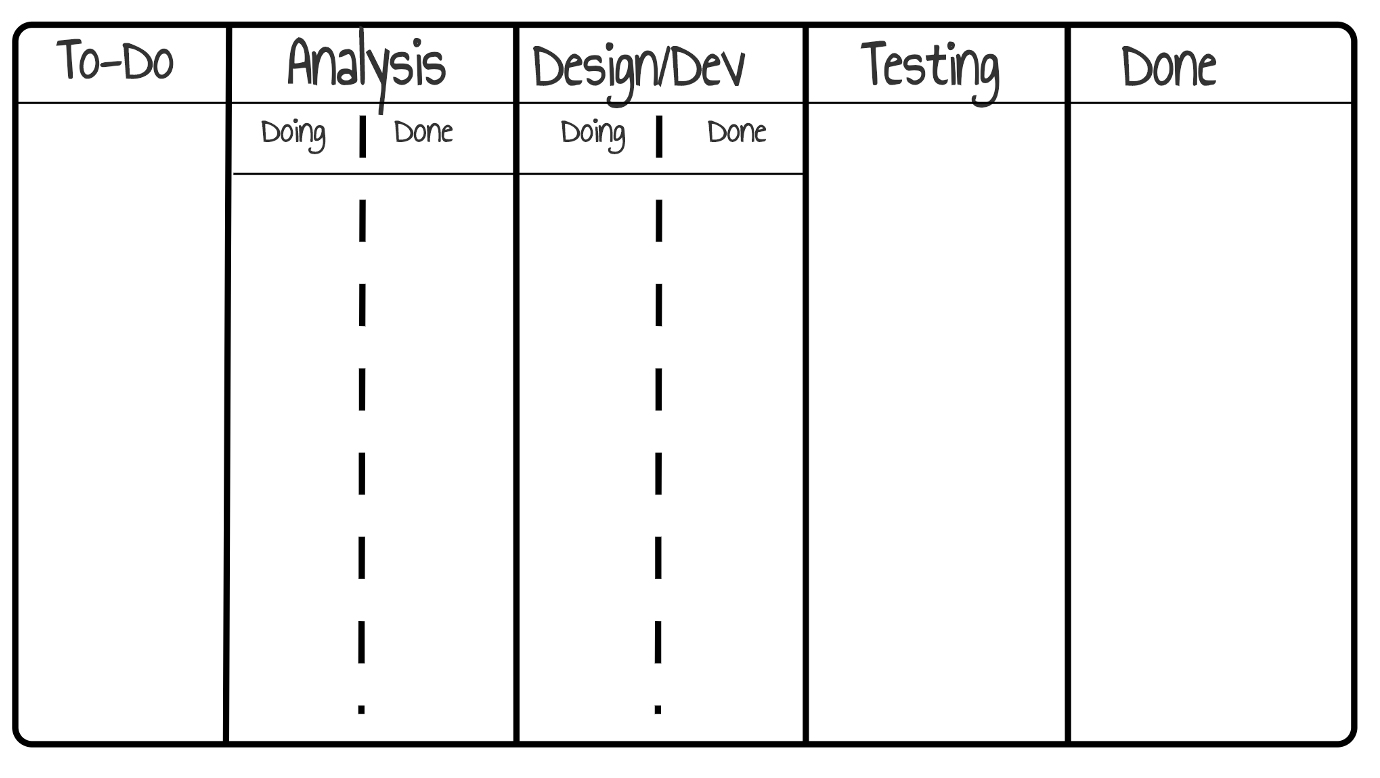
Going back to the earlier video, envision someone asking Bree how much work she had in her queue. Or where in the queue a specific job was. Or when a particular task would be done. Most of us find it pretty hard to answer those questions. A Kanban board tells the story for us.
Manage Flow
Over time, as teams work together and implement Kanban principles, they learn how much work they can accomplish in a given period of time. This is important not just for day-to-day work, but also for managing those urgent tasks, or ones that have fixed deadlines. Without an understanding of our work flow, we tend to start working on things with fixed deadlines right away. This interrupts whatever we were working on at the time, reducing our overall productivity. If we have a better understanding of the flow of our work, we can often delay starting new work until we have capacity, knowing with confidence that we will finish the task by its due date.
Improve & Evolve
It’s always fun for me as an instructor to listen to teams as they play the game. During the first round, as the work piles up and people get frustrated, I’ll often hear things like “No! Don’t give me any more work!” and “Somebody else needs to take that, I can’t do it”. Once I even had someone look at a teammate and say “It’s you! You’re blocking everything! You’re the reason we can’t get anything done!”.
In round two we change the rules and encourage teams to collaborate on their work. It’s a little hard to get them started sometimes, because when we hand a task off to someone else they’re often not as efficient at doing it as we would be ourselves. Nevertheless, as the teams begin to work together, they see first hand how collaborating can help the team finish more work. The entire tone of the conversation changes: “Hey, I can take that one.” “Let me help you with this”. And my favorite of all time: “Wait! Let’s stop at the beginning of each day, see how much capacity we each have, and figure out how to get the maximum number of tasks finished”.
Mic drop. My work here is done.
There is so much more to Kanban than I can outline here in a few paragraphs. I’d encourage you to learn more. A great starting point is “Essential Kanban Condensed” by David J. Anderson and Andy Carmichael. It’s available to download for free here: https://kanbanbooks.com/essential-kanban-condensed/
If you’re interested in finding out more about the power that Kanban can bring to your team, drop me a note at kathy.claycomb@b2ttraining.com. I’d love to talk about learning opportunities. Maybe you’d even like to play the game and experience the Kanban method with your team!

Kathy Claycomb
Managing Partner, Lead Expert
Kathy Claycomb brings over 35 years of experience to the classroom. She has participated in all phases of solution development using everything from agile to waterfall methodologies (and quite a few in between). Before joining B2T, her career spanned roles from application developer to Senior Director of Services at various organizations. Kathy has broad industry background including transportation, manufacturing, insurance, energy, healthcare, and banking.
Kathy’s first love is teaching, and throughout her career she has always managed to spend a portion of her time instructing. She has an engaging, highly interactive teaching style that ensures students leave the course with a thorough grasp of the material. Her students consistently praise her teaching abilities and her talent for drawing on her personal experience to enhance their learning.
Kathy served as the Technical Editor for Business Analysis for Dummies, 2nd Edition.
